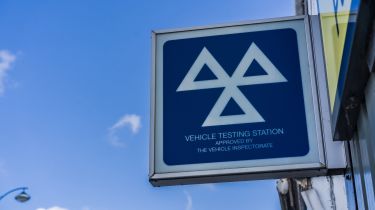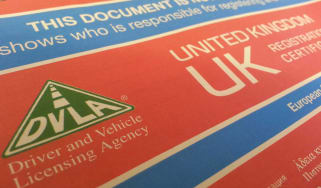MoT test checklist: top tips to help your car pass first time
Read our checklist for the best advice on how to avoid unnecessary – and possibly expensive – MoT failures

Three years after a vehicle is first registered in the UK, it is subject to an MoT test to ensure it is still safe to drive on the road. This isn’t a negotiable thing, because it is required by law and following the first MoT, the test must be carried out once a year if you want to keep your car safe and legal on the road. But what does the test include and how can you increase the chance of your car passing? Read on to find out.
MoT itself stands for ‘Ministry of Transport’, which was a Government department originally formed in the sixties. Since then, the Ministry has had various names, but today it is known as the Department for Transport (DfT). However, the test itself is regulated by the Driver and Vehicle Standards Agency (DVSA), which is part of the DfT.
Even though the MoT test has been around a long time, the ethos behind the test has not changed. It is designed to identify any weaknesses or faults on a car that may endanger the lives of road users – both inside and outside the car. The MoT test has seen some changes over time, and now includes emission testing in a bid to identify and repair cars which have defective emissions control systems, such as where the catalytic converters or diesel particulate filters are removed.
If a vehicle fails its MoT, it is not permitted to be used on the public highway and must be transported on the back of a trailer; the only exception to this rule is if you are going to or from a pre-booked MoT test at an authorised garage. Thus, it is vital to make sure your car, van or bike passes its MoT first time, saving you time, money, and hassle.
There was a time when a paper MoT certificate was a vital document, and the police would routinely ask to see it during traffic stops. Nowadays the information is stored on a national online database and the paperwork issued after your test is simply a statement of whether your car has passed or failed. It’s worth keeping, though, because your MoT certificate can be handy when you sell your car, serving as a record of its previous mileage and a vital part of the vehicle's history. With the DVSA and some MoT garages now going paperless, or if you’ve mislaid the paperwork, you can check the MoT status of your car (or any vehicle, in fact) by using our free MoT checker.
If you use a regular garage or test centre, they may keep a record of the date your MoT is due, and can send out reminders. However, most people have a rough idea of their vehicle’s MoT expiry date, because it’s such an intrinsic part of car ownership.

The most recent major change to MoTs came in May 2018, when a new fault-grading system was introduced. Faults are now categorised as Minor, Major and Dangerous – with the latter two equating to an automatic test fail. Cars with Minor faults will still pass the test, but their MoT certificates will clearly show that the car passed the test “with defects”, urging owners to effect a “repair as soon as possible”.
How to pass the MoT test
When people book MoT tests, even if there’s the offer of a free retest, they don’t generally want the hassle of having to go back to the garage. That’s why it makes sense to understand the rules, and carry out some simple steps to try and guarantee a pass.
These tips below won't help you if your car has significant mechanical wear, or if your emissions are over the limits, but on an otherwise well maintained car they can certainly reduce the annoyance and hassle of an avoidable MoT failure.
Pre-MoT checks
Before you send your car for its annual inspection, there are a few things you can do to ensure you give your car the best chance of passing.
- Make sure your number plate is clean – your number plate must be clean, easily readable and in good condition.
- Check your windscreen wipers and replace them if they are in poor condition or don’t fully clear the windscreen.
- Top up all your fluids if necessary, including oil, screenwash and brake fluid.
- Make sure all of your lights are in working order – get someone to stand behind the car or park in front of a large shop window and use the reflection to confirm the lights work properly.
- Clean your car and remove any items from the boot or footwells, because an examiner might refuse to test your car if they’re too cluttered. If you have a child seat fitted, you should also remove this for the duration of the test.
- Check the tread depth, pressure and general condition of your tyres for any tears, bulges or nails – the minimum tread depth for an MoT pass is 1.6mm across the middle three-quarters and no significant damage.
- Check your car's horn functions properly and any mirrors (internal or external) are intact.
By doing these checks in the weeks leading up to your MoT, not only will you give your car the very best chance of passing, you’ll also give yourself some time should you need to book your car into the garage for any repairs.
How much does an MoT cost?
The cost of an MoT is controlled by law, with the maximum charge for cars being £54.85. Some MoT test centres might choose to charge less, so it’s worth looking around to see if you can save some money.
If you think you’ve a chance of failure, make sure you pick an MoT test centre that offers free retests within 10 days, because you can be charged a partial retest fee. If repairs take longer, you’ll have to pay the full fee again.
MoT rules for tyres
Tyres must have at least 1.6mm of tread across the middle three-quarters; anything below 1.6mm is classed as an instant MoT failure. Tyres with significant damage such as cuts, bulges or cracking will cause a fail, too. If you need to buy some new tyres before you send your car for its MoT, we've ranked the best car tyres to buy here...
MoT rules for lights
All your vehicle’s lights must be clean and work correctly, or it will fail the MoT. So before you book the car in, check the lights work, and if you need new ones, we've rounded up the best car headlight bulbs to make choosing a replacement easier.
That means headlamps on full and dipped beam, sidelamps and daytime running lights, hazard lights and indicators, fog lamps if fitted, and even number plate lights at the back. You can pick up most bulbs from car accessory stores, and they’re usually easy to fit – if sometimes a little fiddly.
MoT rules for windscreen and wipers
Not every chip or crack on a windscreen will cost you an MoT pass, because it’s all down to where that chip or crack is located on the windscreen. The details may seem complicated, but as a rule of thumb you can get away with chips smaller than 10mm in front of the driver. Any damage bigger than 10mm in front of the driver – and also in the glass area swept by the wipers – will cause an MoT fail. Elsewhere on the glass, damage has to be larger than 40mm to lead to an MoT fail.
Wiper blades must be in good condition – not perished or damaged – and clear the screen effectively. The washers must work too, and the MoT tester is within their rights to issue a fail if you haven't topped up the washer bottle or unblocked dirty washer jets with a pin! To avoid an MoT fail for damaged or perished wiper blades, it's best to check them before sending your car for its test – thankfully, if they need replacing, we've tested the best windscreen wiper blades you can buy.
MoT rules for number plates
As well as using the correct lettering style and spacing, your number plates need to be clean and easy to read from a distance. Modified number plates, damaged or otherwise illegal plates will fail the MoT.
MoT rules for diesel particulate filters
If you own a diesel car fitted with a diesel particulate filter (DPF), it could be given a Major defect and automatically fail the MoT test if it emits “visible smoke of any colour” during metered checks.
Testers will also inspect DPFs closely for signs of removal or tampering, awarding a Major defect and failing the car if foul play is detected. Testers must refuse to test any car where the “DPF canister has clearly been cut open and re-welded” unless the owner “can show evidence that there was a valid reason to cut it open, such as for filter cleaning.”
What is checked during an MoT?
- Bodywork: any sharp edges caused by damage or corrosion will lead to an MoT test failure, because this could injure pedestrians or other road users. Any rust within 30cm of safety-critical components (such as steering racks, brakes etc) will result in an MoT fail.
- Brakes: the car will be tested on a rolling road and the brake pedal depressed to ensure the brakes work correctly and stop the car effectively and in a straight line. The ABS warning light must not be illuminated on the dashboard, other than when the anti-lock braking system is engaged under heavy braking. The brake discs and pads must be in good condition, the handbrake must hold the car when parked on an incline, and the brake lines, servo and brake fluid will all be inspected too.
- Doors: during testing, the examiner will check to see if all of the doors can be opened from inside and outside the car, as well as checking to see if the bonnet and boot openings remain securely fastened at all times.
- Exhaust: your exhaust will be tested for any signs of leaks.
- Emissions: emissions are tested during the MoT to ensure your car is within the legal limit.
- Horn: the horn must be in good working order and audible to other road users when pressed. Any novelty horns fitted will result in an MoT failure.
- Lights: all lights must illuminate and work as intended – this includes indicators, full/ dipped-beam headlights, side lights, daytime running lights, brake lights, foglights and rear foglights (on cars built after 1986). Rear reflectors must also be fitted to any car built after 1 April 1980.
- Seats/ seatbelts: any cars built after 1985 should be fitted with seatbelts, including the locking mechanism and clip. The seatbelt must retract to properly fit around the driver.
- Towbar: if your car is fitted with a towbar, then it must be properly secured to the car and free from rust or corrosion.
- Tyres: tyres must have at least 1.6mm of tread across the middle three-quarters. There should be no significant damage, such as cuts, bulges, cracking or nails embedded within the carcass, because these will result in a failure too.
- Windows: any windscreen chips or cracks must be less than 10mm in diameter if they are within the area cleared by the windscreen wipers. Outside this area, they must not be more than 40mm.
- Wipers: all windscreen wipers must be in good condition and clear the screen effectively. The rubber must be in generally good condition not perished.
Are there any MoT exemptions?
Cars over 40 years old will qualify for both MoT and VED (road tax) exemptions. Of course, some people who own cars that are MoT exempt still opt to put their car through the annual inspection as a way to keep the car roadworthy and as a form of maintenance.
Check any car's MoT history in a few easy clicks with our free MoT checker tool...
Find a car with the experts










